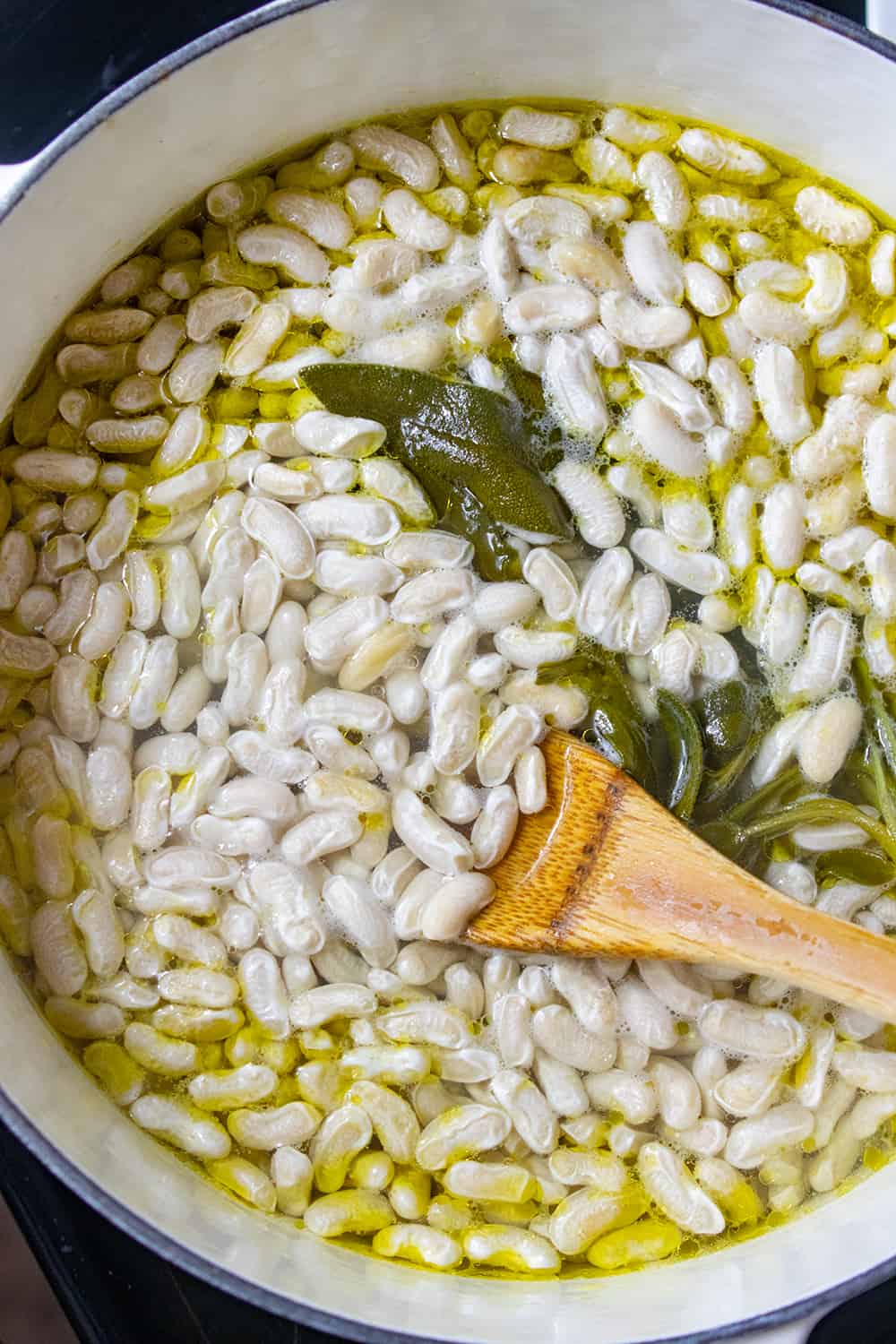Learn how to cook Italian beans, and never look back.
Okay, okay. Having your life changed by beans might sound a touch hyperbolic. However, if you haven't made Italian beans from scratch before and the extent of your cannellini bean experience is the canned stuff, then, yes, this is gonna change your perspective on the humble bean forever! There's a reason white beans are such a staple in the north of Italy, and you're about to find out why.Beans can be scrape-the-bottom-of-the-pot-clean delicious, and they have so much more to offer than even the best brands of canned ones in the store. Not to say we don't love canned beans for their own reasons: it's a pantry staple we always have on hand for quick salad additions, weeknight chilis, bean dips and more. However, if it's a special occasion and beans are the star of the show, you simply have to make them from scratch. It's one of the simplest recipes you'll ever make, and it will take beans from a food you feel indifferent about to something you genuinely crave.
Lastly, in case you needed more convincing - dried beans are so inexpensive, it's actually more cost-effective to make them from scratch than to buy cans. Win win. Here's what to do:
It all starts with the bean.
If you're going to spend the time making beans from scratch, it all starts with a good quality bean. In general, we prefer to stay away from the big bags buried in the grocery store aisles - they may have been sitting there for months and months, and stale beans will never cook up as tender as we want them to be. When buying in stores, we prefer to get them from the bulk bins in health food stores, as the high turnover means they get replenished frequently. While smaller packages of high quality beans are more pricey, those are a great choice as well.
For a splurge, heirloom beans are a worthy investment. What makes a bean an "heirloom bean" is that they're grown from seeds that have been passed down through generations of farmers. These beans are often the most flavorful, have the best texture, and are generally the freshest, as the shops that sell them are often supplied directly from the growers.
Our top choice? Organic cannellini beans from Agribosco. They come from a company devoted to preserving the sanctity of the land of Monte Cucco, in Umbria, with their natural farming methods. The quality of care in farming and cultivating these beans is so apparent when you take your first bite of these gorgeous beans.
While many Italian bean recipes call for cannellini, this same method could work with just about any white bean, like cranberry beans, borlotti, navy or great northern.
To soak or not to soak...
This might be a hot button topic, but our opinion is that if you have the time to soak your beans, wonderful - soaking them in water overnight will definitely cut down on cooking time and could produce more evenly cooked beans. People also report that soaking them can help reduce any unpleasant bean side effects in your stomach (we all know what I'm talking about here).
However, we don't think it's 100% necessary to produce great beans - and sometimes we don't have that kind of foresight when we want to cook them. Giada doesn't opt to do it in her white beans with cavolo nero, and they're always delicious. And our team has never had issues with gut troubles after eating un-soaked beans, as long as they're cooked through all the way. However, it's up to you! Our opinion? Try it out both ways and see what suits you (and your stomach).
Don't skimp on the oil and salt!
You'll find most bean recipes call for oil, and with good reason. A generous glug of olive oil seasons the broth and the beans, and imparts a sumptuous, velvety texture as well. Additionally, a layer of oil on top your pot helps keep the beans submerged in water, which promotes even cooking. Even after the beans are totally done cooking, we think it's essential to add another hearty drizzle of your favorite olive oil.
Like all starches, beans need a lot of salt. Some say salting too early in the cooking process can result in tough beans, so, we opt for salting near the end. The beans still have some time to soak up the salt, and they remain perfectly tender. You might need a lot more salt than you think - start small and keep tasting!
Make it your own.
Giada's recipe is a starting-off point - it results in absolutely delicious beans, so you certainly don't have to change up the recipe one bit - but you can bump up the flavor even more with your favorite aromatic ingredients. Herbs like rosemary, thyme, oregano, or bay leaf are wonderful additions. A charred lemon or onion half will add an incredible depth of flavor, and a Parmesan rind adds an unbeatably savory quality.Okay - we think you're ready. Get to cooking your Italian beans, and report back once your life has been changed!



















0 comments